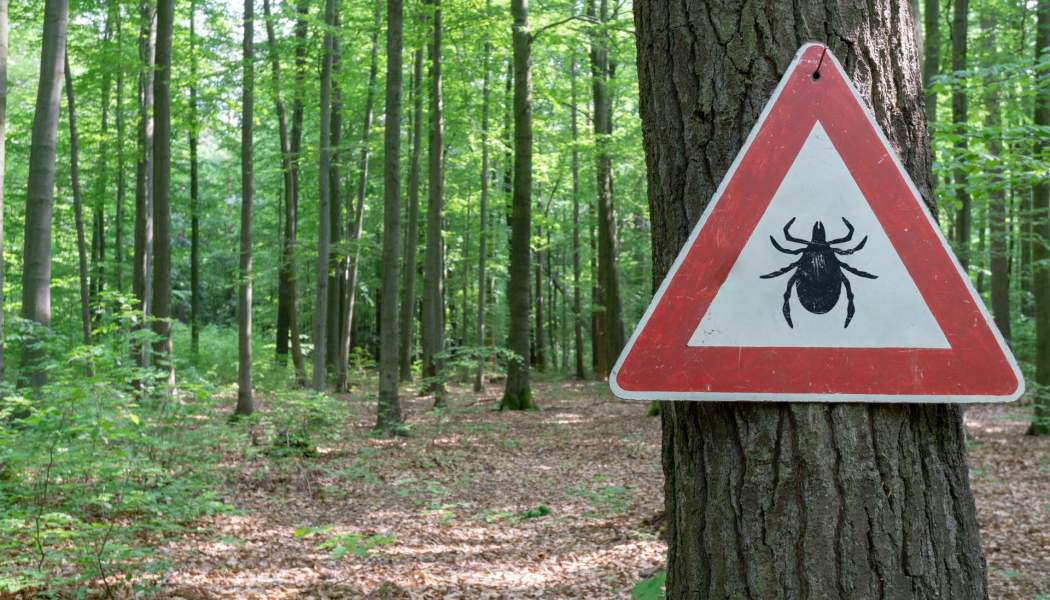Ticks are arachnids that feed on animal blood in order to grow and reproduce. Compared to insects, which have six legs, ticks, like spiders and other arachnids have eight legs.
They are hematophages, meaning they meet all their nutritional needs through eating blood, and need a blood meal to grow from one life stage to another. This adaptation evolved 120 million years ago!
Did you know ticks have special proteins in their saliva that prevent animals from noticing that they have been bit? Some researchers are studying these proteins to try to develop medicines.
Ticks cannot fly or jump, so adult ticks “quest” for an animal to bite by climbing to the top of tall grasses and other vegetation, holding on with a few legs and extending the others so they can hop on to an animal (such as a deer, dog or human) as they brush past. They need the grass in order to quest, but they like to stay in the shade, so they are most often found in grassy areas close to trees.
There are more than 20 species of ticks found in British Columbia. The main species of ticks that bite humans in B.C. are the Rocky Mountain Wood Tick and the Western Black-legged Tick. You can read more about B.C. ticks here.
Most of the time, tick bites are harmless. We know from testing programs that the risk of infection from a tick bite is very low (only around one per cent of ticks tested in B.C. have the bacteria that can cause Lyme disease). Even if a tick has a germ that can cause illness, removing the tick within 24-36 hours of a bite can prevent an infection.
Prevent tick bites: Keep grass near trees in your yard short, so that adult ticks don’t have a place to climb up. When hiking, stick to defined trails rather than walking through long grass. If that’s not possible or likely, wear long pants. You can tuck your pants into your boots or socks to make sure no ticks can get inside. You can also use an insect repellent that contains DEET.
Check for ticks: You likely won’t feel tick bites so it’s important to check for ticks. After spending time in the outdoors, check yourself and your loved ones (especially kids and/or dogs) for ticks. Ticks prefer areas with thin skin, so they usually climb towards the groin, armpits or head/neck, so be sure to check all those places.
Remove ticks: Learn how to safely remove a tick yourself. If you’re not comfortable, you can see your family doctor to help you remove a tick and submit it for testing.
Submit ticks for testing: Ticks found on B.C. residents can be tested for free at the BCCDC Public Health Laboratory if submitted by a physician. Commercial tick tests are not recommended. If you’ve removed a tick yourself, and you want to submit it for testing, save it for your doctor by putting it in a container with a tight lid with a damp cotton ball to keep it alive. Write down the location where you think the tick came from, and make an appointment with your doctor as soon as you can.














